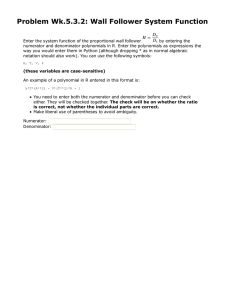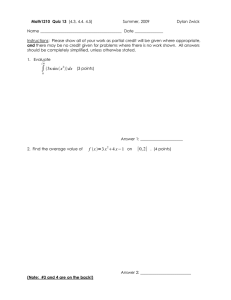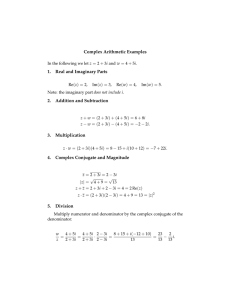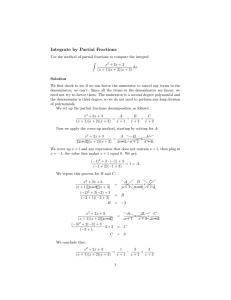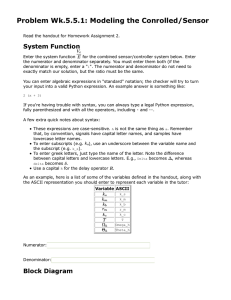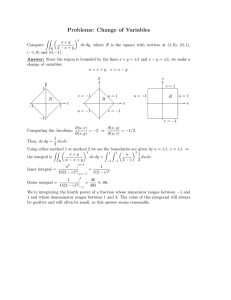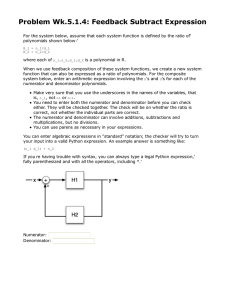x − 11 dx (x + 9)(x + 2)
advertisement
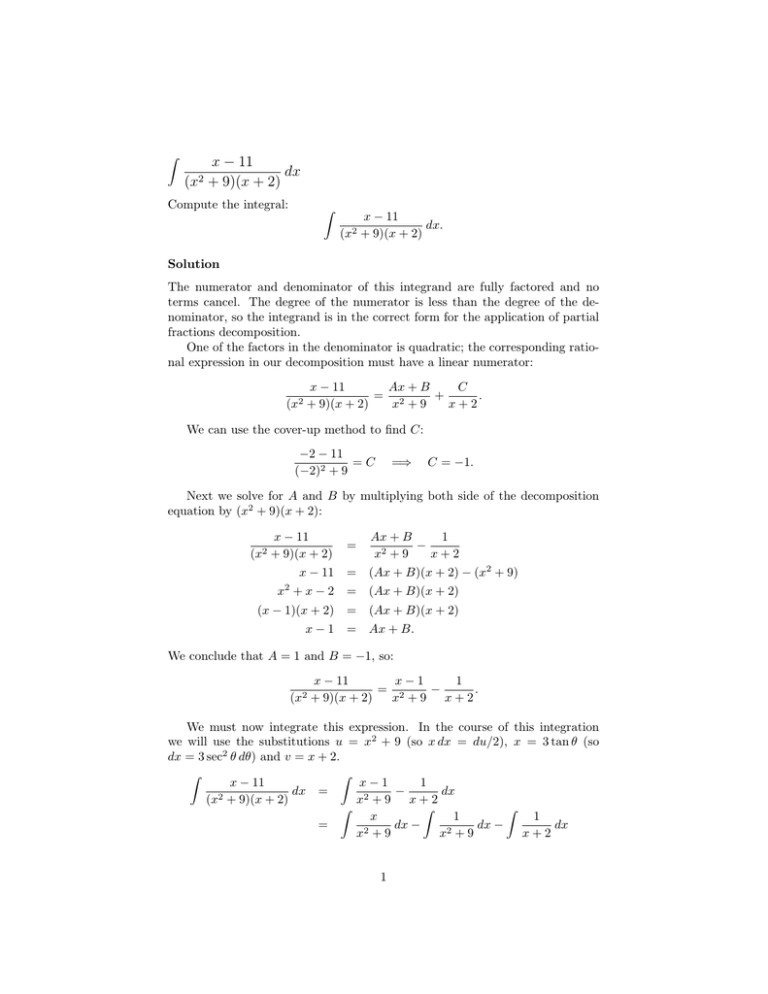
� (x2 x − 11 dx + 9)(x + 2) Compute the integral: � (x2 x − 11 dx. + 9)(x + 2) Solution The numerator and denominator of this integrand are fully factored and no terms cancel. The degree of the numerator is less than the degree of the de­ nominator, so the integrand is in the correct form for the application of partial fractions decomposition. One of the factors in the denominator is quadratic; the corresponding ratio­ nal expression in our decomposition must have a linear numerator: (x2 x − 11 Ax + B C = 2 + . + 9)(x + 2) x +9 x+2 We can use the cover-up method to find C: −2 − 11 =C (−2)2 + 9 =⇒ C = −1. Next we solve for A and B by multiplying both side of the decomposition equation by (x2 + 9)(x + 2): (x2 x − 11 + 9)(x + 2) = x − 11 = 2 x +x−2 = Ax + B 1 − 2 x +9 x+2 (Ax + B)(x + 2) − (x2 + 9) (Ax + B)(x + 2) (x − 1)(x + 2) = (Ax + B)(x + 2) x−1 = Ax + B. We conclude that A = 1 and B = −1, so: x − 11 x−1 1 = 2 − . (x2 + 9)(x + 2) x +9 x+2 We must now integrate this expression. In the course of this integration we will use the substitutions u = x2 + 9 (so x dx = du/2), x = 3 tan θ (so dx = 3 sec2 θ dθ) and v = x + 2. � � x − 11 x−1 1 dx = − dx 2 2 (x + 9)(x + 2) x +9 x+2 � � � x 1 1 = dx − dx − dx x2 + 9 x2 + 9 x+2 1 � � du/2 3 sec2 θ 1 − dθ − dv u v 9 tan2 θ + 9 � 1 3 sec2 θ ln |u| − dθ − ln |v| 2 9 sec2 θ � 1 1 ln |u| − dθ − ln |v| 2 3 1 1 ln |u| − θ − ln |v| + c 2 3 �x� 1 1 2 − ln |x + 2| + c ln |x + 9| − tan−1 2 3 3 � = = = = = We see that even a relatively simple rational expression can have a complex integral! 2 MIT OpenCourseWare http://ocw.mit.edu 18.01SC Single Variable Calculus�� Fall 2010 �� For information about citing these materials or our Terms of Use, visit: http://ocw.mit.edu/terms.

